Corsair HS80 RGB wireless review: a phenomenal premium gaming headset with Dolby Atmos
The Corsair HS80 RGB wireless headset sounds incredible
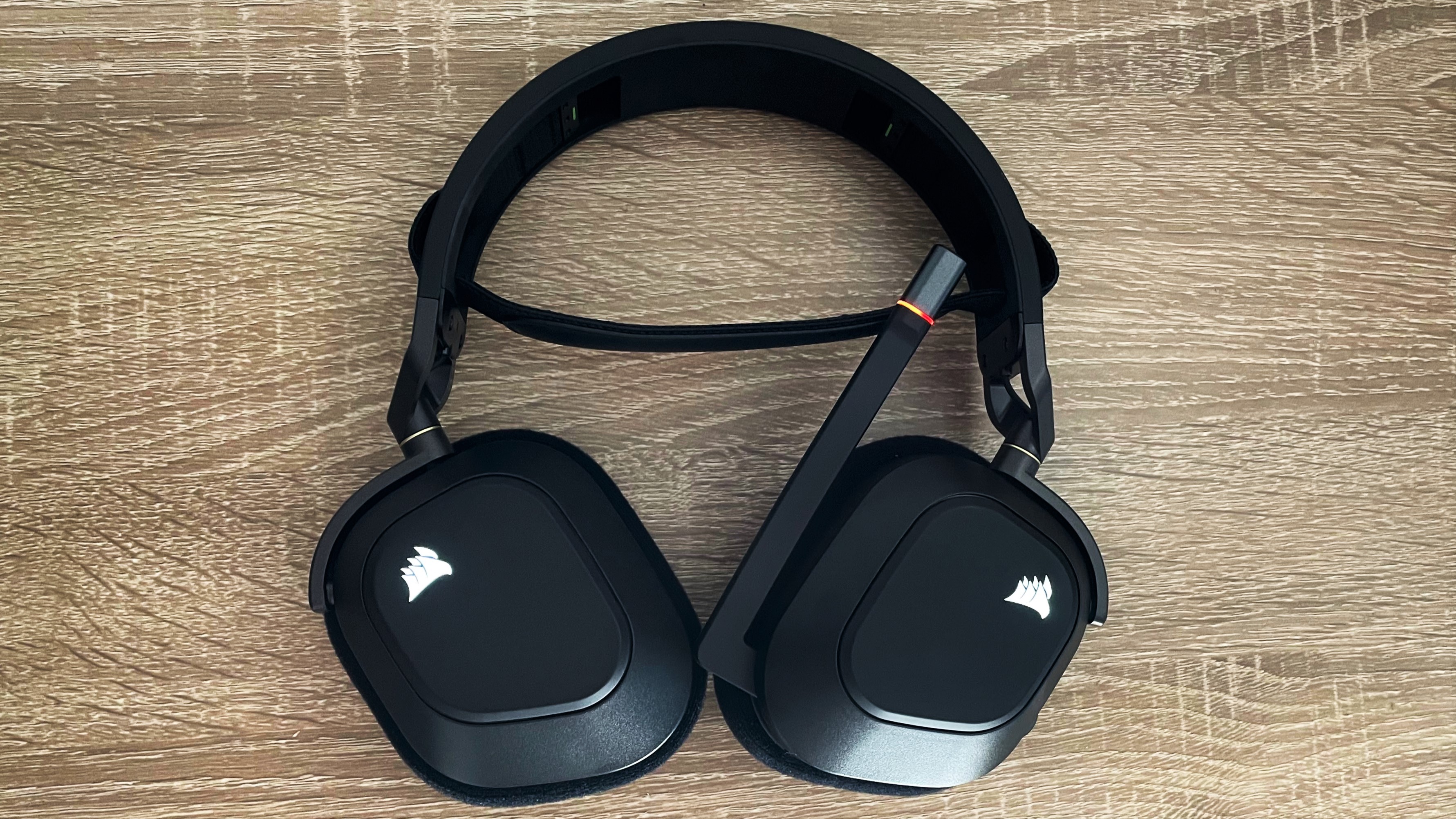
The Corsair HS80 RGB wireless gaming headset sounds amazing, you'll be totally immersed in the action. If you use it with a PC you'll get Dolby Atmos surround sound support as well. This is an impressive piece of kit with discreet RGB lights and an omnidirectional microphone.
-
+
Excellent audio quality
-
+
Sleek, stripped back design
-
+
Wireless connectivity
-
-
Dolby Atmos not available on consoles
-
-
Microphone can be quiet
Why you can trust T3

If you’re on the hunt for one of the best gaming headsets, then this Corsair HS80 RGB wireless review is certainly a good starting point.
Corsair is a trusted name in the world of gaming, which is why you’ll find them in pretty much all of T3’s gaming peripheral guides, from the best gaming keyboards to the best gaming mouse. This premium headset is no different and it has tonnes going for it.
The first thing you need to know is that the Corsair HS80 RGB wireless is compatible with PC, Mac, PlayStation 4 and PlayStation 5 - if you're an Xbox gamer then you'll have to look elsewhere, maybe consider the LucidSound LS50X instead.
Now, let’s get down to the nitty-gritty, read on for the full Corsair HS80 RGB wireless review.
Corsair HS80 RGB wireless review: price and availability
You can buy the Corsair HS80 RGB wireless now starting from $150 in the US, £140 in the UK and AU$220 in Australia. Take a look at the widgets on this page for more recent pricing from across the web.
Corsair HS80 RGB wireless review: design and setup
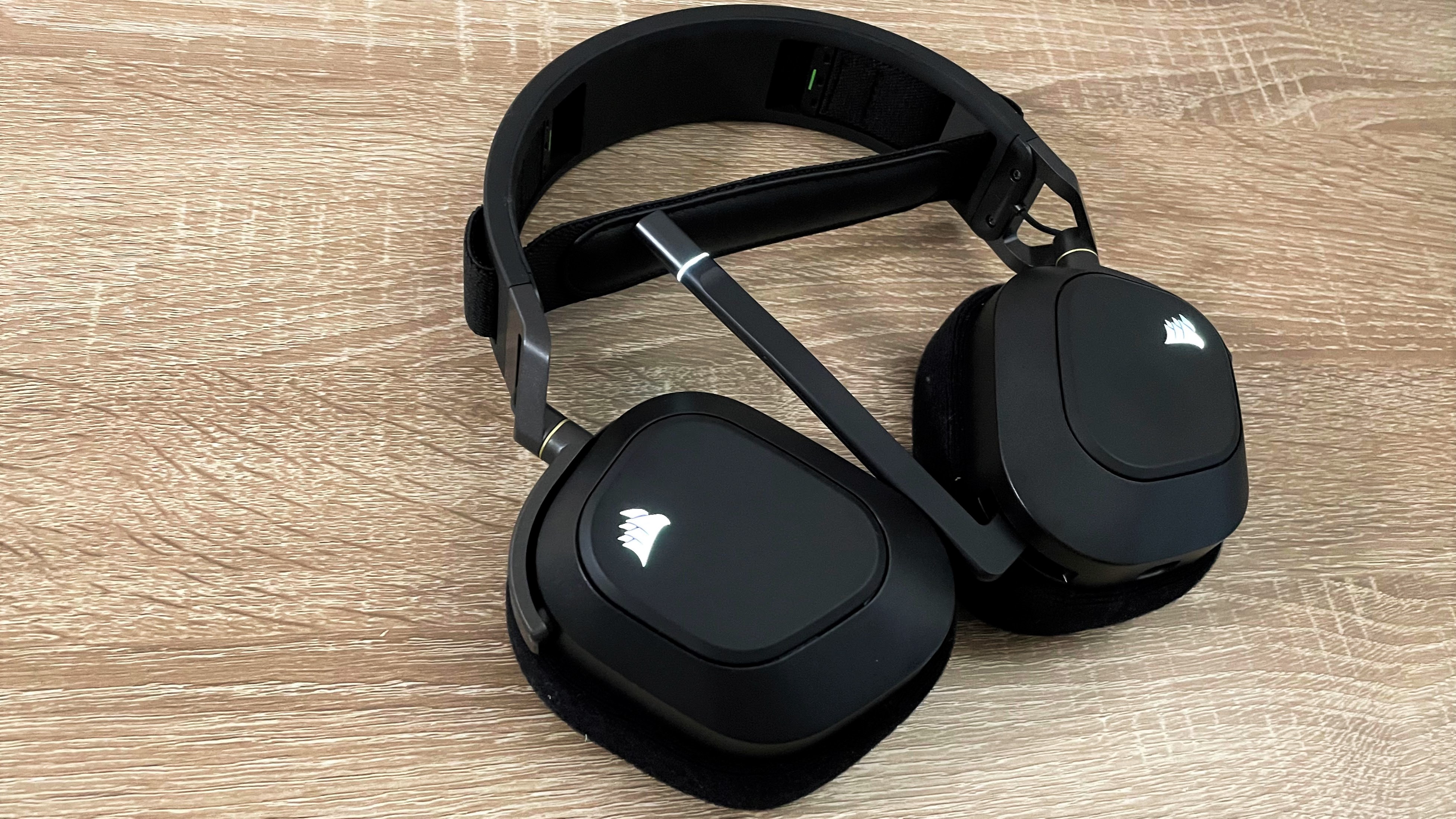
Straight out of the box, the Corsair HS80 RGB wireless looks smart. This gaming headset is made from black aluminium and plastic, with memory foam earpads covered in a soft breathable fabric that sit around your ear, and a floating headband.
On each earcup, there’s a small Corsair logo that subtly illuminates with RGB lighting. There’s also an omnidirectional microphone on the left, it’s made from flexible plastic so you can move it around to position it more precisely, although you can’t get it to sit closer to your mouth which was a bit problematic. The earcups can pivot so you’ll be able to position those perfectly for your head as well.
Weighing 367g, the Corsair HS80 RGB feels lightweight to wear, it’s lighter than some of the other headsets I’ve tried out. It was comfortable to wear for a long time thanks to the materials used, and that was also partly aided by the floating headband which stops the steel band from touching your head. The headset uses an elastic strap to fit the headband to you, it’s very quick and easy to adjust which bodes well for anyone who might share this with other people at home.
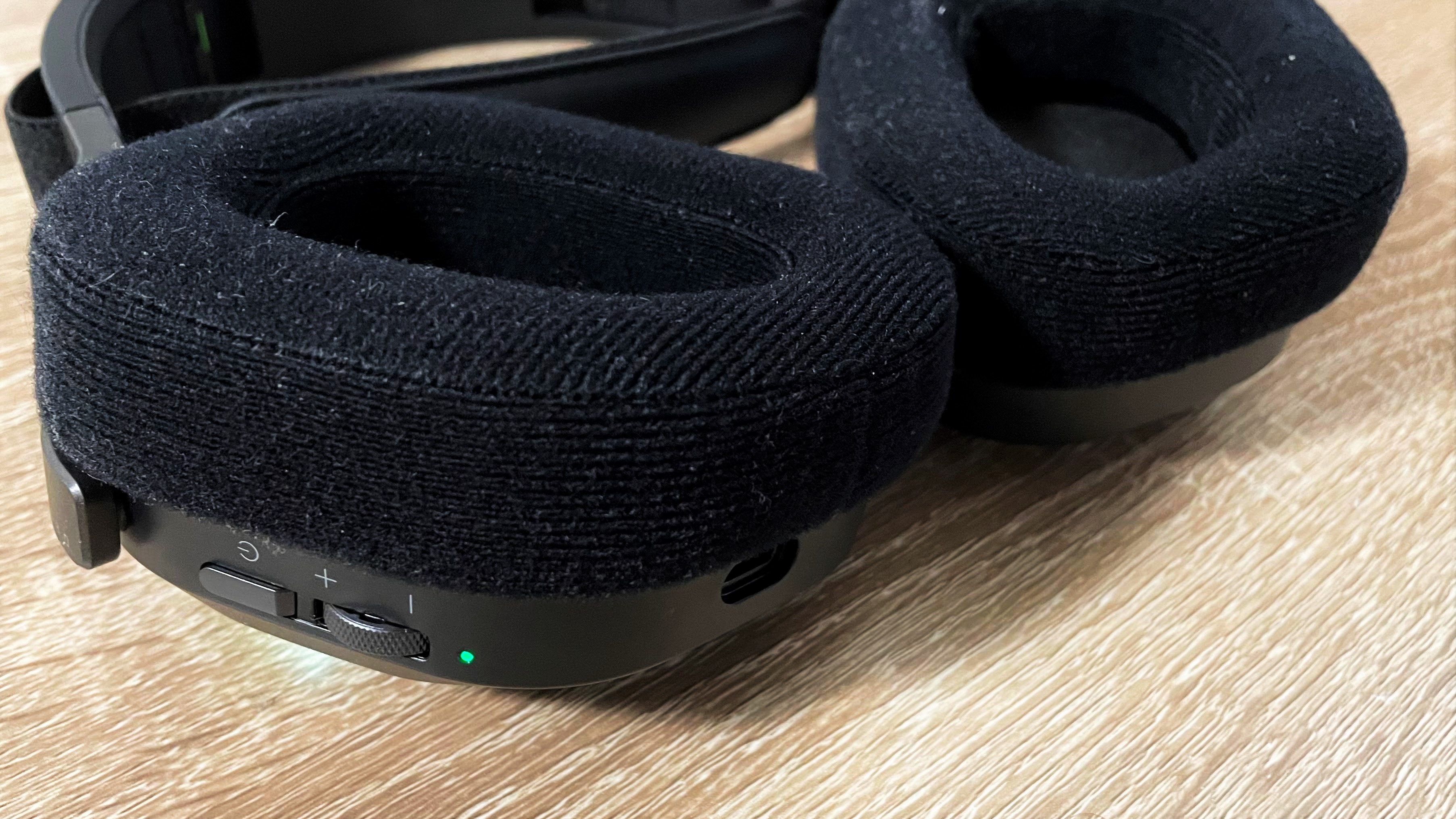
While this might look good for a gaming headset, it’s not discreet enough to double up as a pair of day-to-day over-ear headphones, and the microphone isn’t detachable.
There are a few controls on the headset itself like a volume dial and power button. To mute the microphone, there isn’t a specific button, you just need to push up the microphone away from your face. That will switch it off, turning the LED light strip on it from green to red.
As this is a wireless headset, it connects using a USB wireless receiver. It’s compatible with everything from PC and Mac to PlayStation 4 and PlayStation 5. I’m not sure why they’ve opted for USB-A as opposed to the more up-to-date USB-C but that will be better for anyone who hasn’t got loads of the newer ports anyway.
When you plug in the USB and power the headset on, it connects immediately. You’ll know it’s ready when the lights on the headset come on and the LED on the USB receiver turns white. Setting it up is incredibly easy.
The battery will last about 20 hours which is certainly good enough to get you through the longest gaming sessions but it isn’t quite as impressive as some other high-end headsets. In the box, the Corsair HS80 RGB wireless comes with a USB-C cable to charge it.
To adjust the RGB lights and change the equaliser settings to suit the type of sound you want to hear, you’ll need to download the Corsair iCue desktop app. Admittedly when it comes to the lights, there isn’t much you can do given the fact that the lighting zones are so small but you’ll still want to download the software to make the most out of the Corsair HS80 RGB wireless headset.
Corsair HS80 RGB wireless review: audio and performance
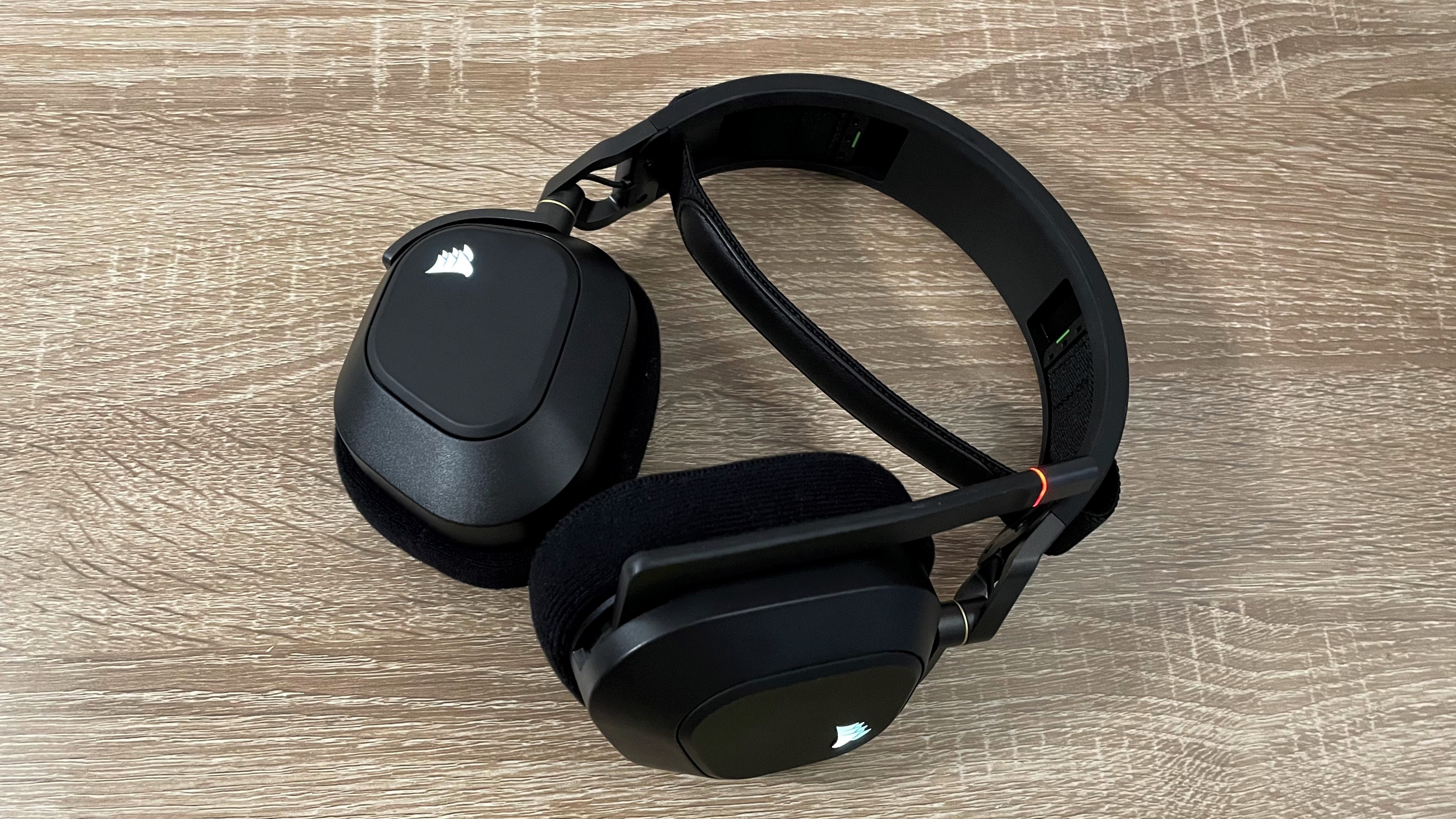
With a frequency range of 20Khz- 40Khz, alongside custom-tuned 50mm neodymium audio drivers, the Corsair HS80 RGB wireless headset sounds phenomenal and manages to deliver impressive amounts of detail. It's very loud too.
You’ll even get the benefit of Dolby Atmos surround sound when you download the Dolby Access desktop app, although that does mean you can only make the most of that on your PC and not on a console.
The audio was particularly good in shooting games because the low end is powerful enough to make you feel properly immersed in the action, not to mention the fact that you can hear where noises are happening in relation to you. Whether it's an explosion or the crunch of the grass beneath your feet, you really get the feeling that you're there in the game.
If you were to find the low-end too impactful then you can adjust it in the iCue app as well. This headset really will cater to most people’s tastes. You can set up to 5 preset EQ settings for each type of game or genre of music, then by pressing the volume dial you can switch between them on the fly - in practice this was actually a really useful feature to have.
When I gave the headset a test run, the person on the other end thought the omnidirectional microphone was clear but quieter than on other headsets. It’s not a huge issue, but it’s definitely worth knowing about if you want your voice to come through loudly.
This headset has a wireless range of about 60ft (18m) so you could wander around without them disconnecting but bear in mind that if you go a few rooms away, they will sometimes cut out.
Corsair HS80 RGB wireless review: verdict
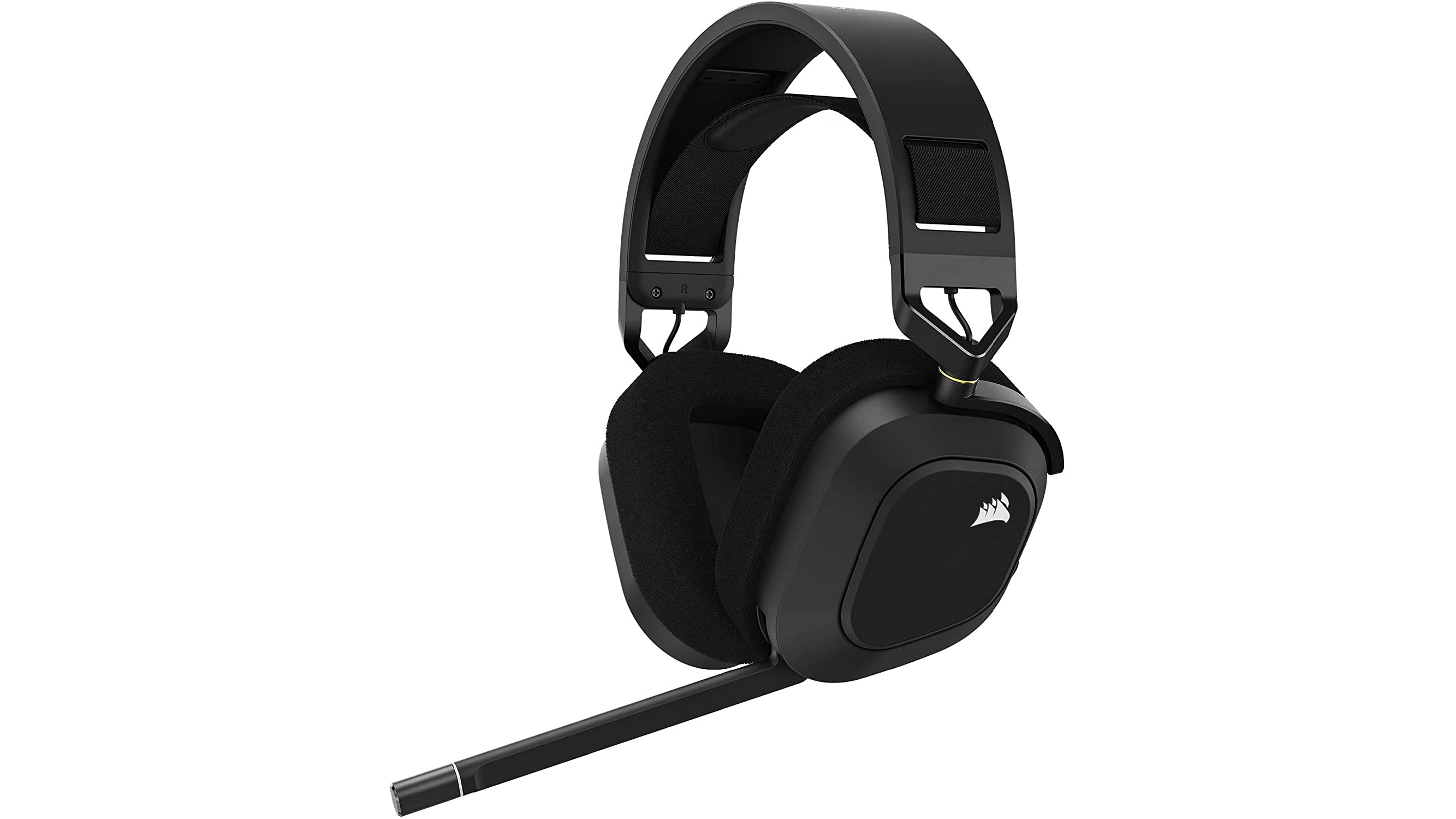
All in all, the Corsair HS80 RGB wireless is well worth its premium price tag. While it’s not plastered with extravagant RGB lights and the microphone could be improved, this headset does look smart and feels comfortable to wear for a long time.
The real crowning glory here is the sound quality, which is among the best I’ve heard on a gaming headset, you truly feel like you’re a part of the action especially if you use it with a PC because you’ll be able to make the most out of the Dolby Atmos support.
If you’re willing to splash the cash on the Corsair HS80 RGB wireless headset you won’t be disappointed because this is an excellent piece of kit that is sure to level up your gaming rig.
Corsair HS80 RGB wireless review: also consider
If you want a premium gaming headset to use with a PlayStation then the SteelSeries Arctis 7P Wireless is the best you can buy right now. It is a little pricier than this but it was designed with PlayStation 5 gamers in mind and the microphone is much more accomplished.
For PC gamers who don’t mind using a wired headset, you won’t get better than the Asus ROG Delta S - it’s got more in the way of RGB lighting and the audio quality is just as impressive, if not more impressive than the Corsair HS80 RGB wireless headset.
Sign up to the T3 newsletter for smarter living straight to your inbox
Get all the latest news, reviews, deals and buying guides on gorgeous tech, home and active products from the T3 experts

Yasmine is the former Reviews Writer for T3, so she's been knee-deep in the latest tech products for reviewing and curating into the best buying guides since she started in 2019. She keeps a finger on the pulse when it comes to the most exciting and innovative tech – and since departing has also held a role as Digital Spy's Tech Editor. In her free time, you'll catch her travelling the globe – the perks of being a freelance tech expert – tending to her plants when at home and, but of course, planning her next big trip.
-
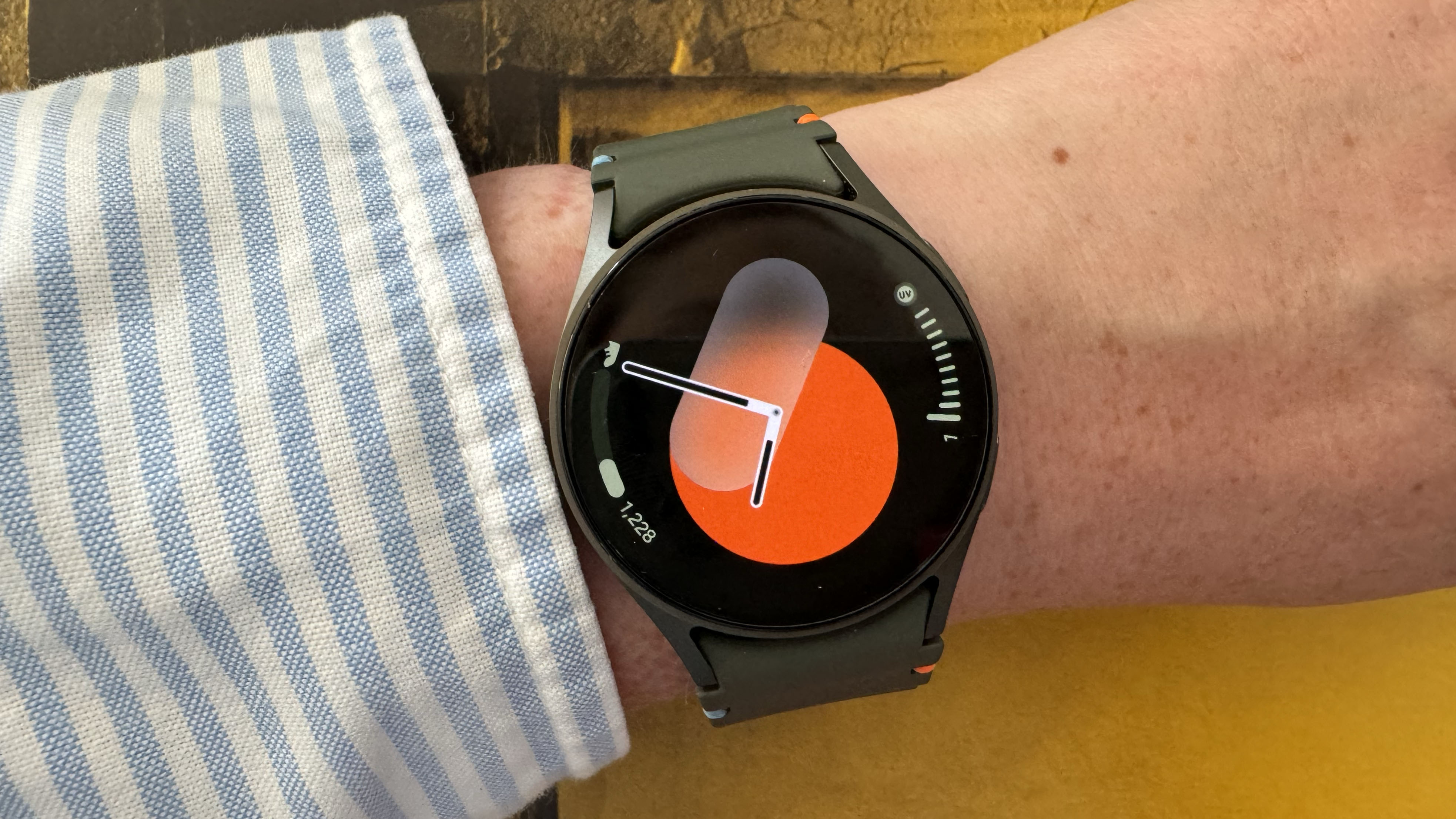 Your WearOS watch will get arguably the biggest app update in a generation soon
Your WearOS watch will get arguably the biggest app update in a generation soonThis could be a gamechanger
By Sam Cross Published
-
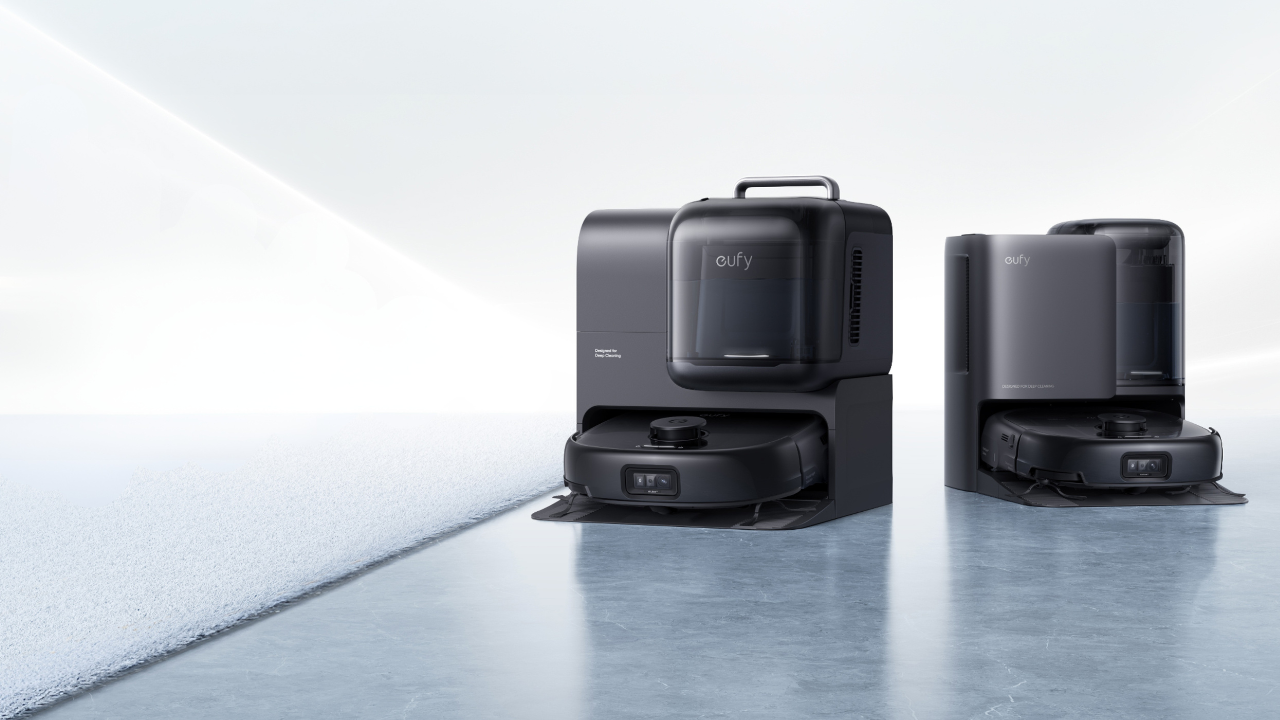 Eufy’s latest robot vacuum doubles as a portable deep cleaner for spot cleaning
Eufy’s latest robot vacuum doubles as a portable deep cleaner for spot cleaningA global first in home cleaning tech
By Lizzie Wilmot Published
-
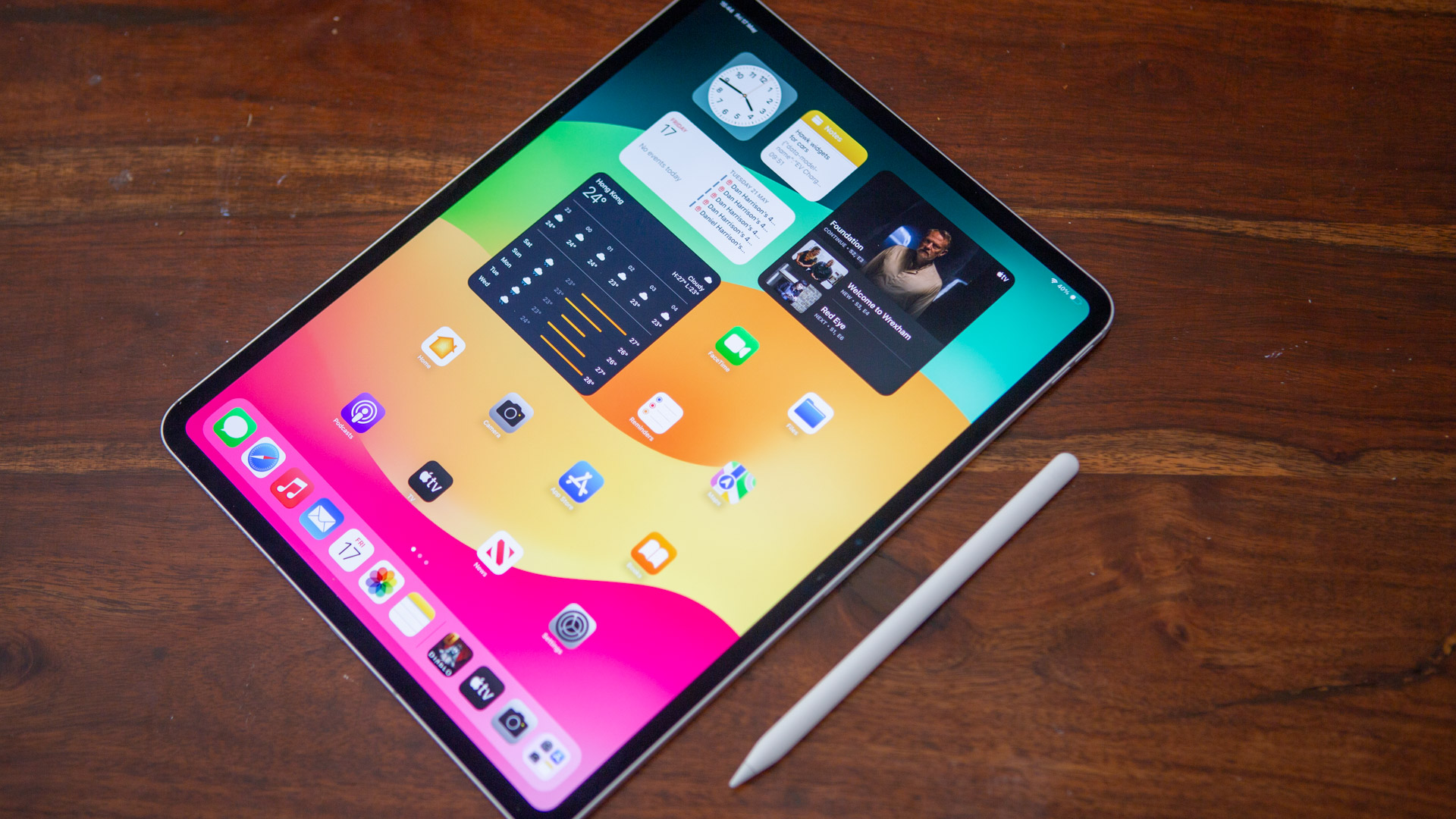 iPad reportedly getting major makeover and your current model could benefit too
iPad reportedly getting major makeover and your current model could benefit tooApple is said to be making a change that iPad power users have been wanting for years
By Carrie Marshall Published